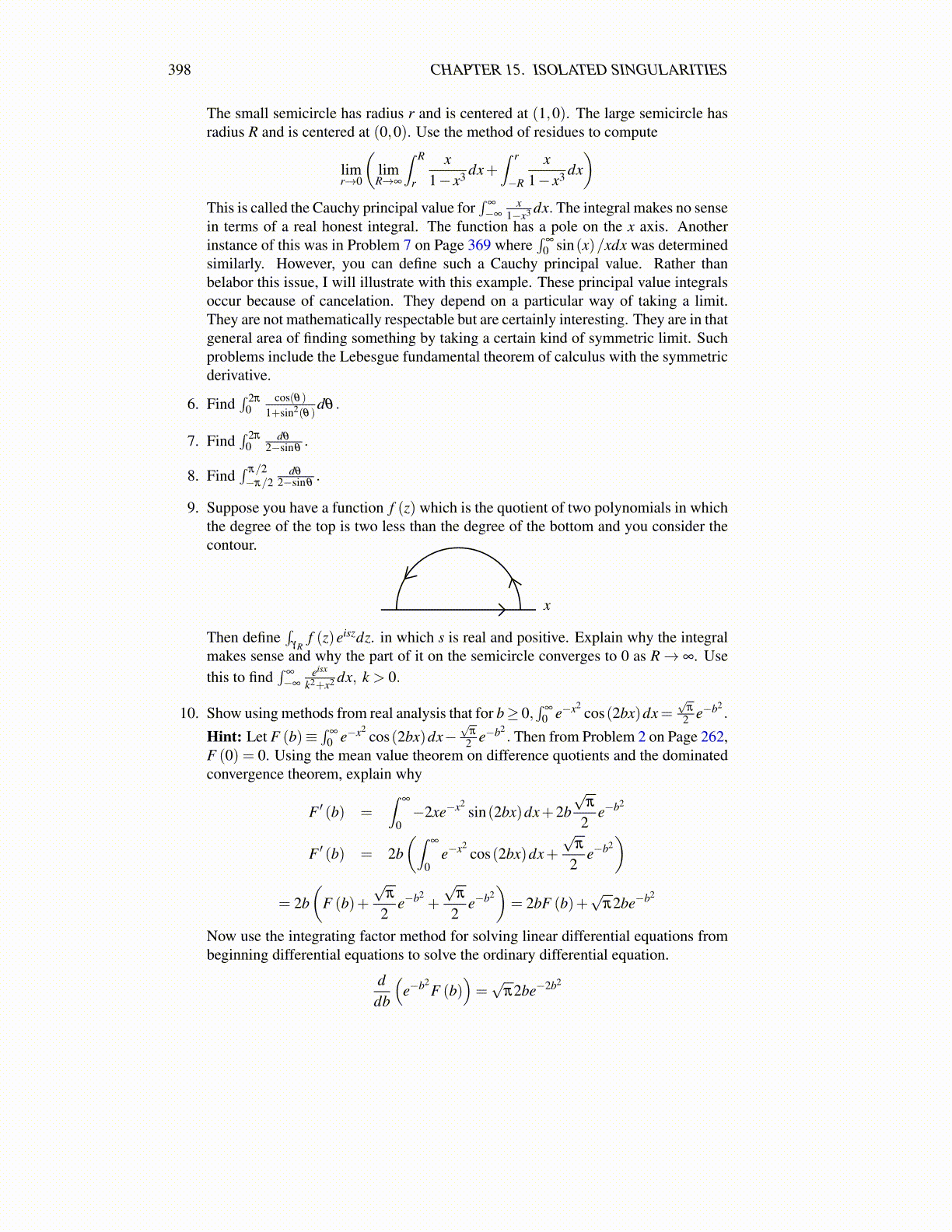
398 CHAPTER 15. ISOLATED SINGULARITIES
The small semicircle has radius r and is centered at (1,0). The large semicircle hasradius R and is centered at (0,0). Use the method of residues to compute
limr→0
(lim
R→∞
∫ R
r
x1− x3 dx+
∫ r
−R
x1− x3 dx
)This is called the Cauchy principal value for
∫∞
−∞
x1−x3 dx. The integral makes no sense
in terms of a real honest integral. The function has a pole on the x axis. Anotherinstance of this was in Problem 7 on Page 369 where
∫∞
0 sin(x)/xdx was determinedsimilarly. However, you can define such a Cauchy principal value. Rather thanbelabor this issue, I will illustrate with this example. These principal value integralsoccur because of cancelation. They depend on a particular way of taking a limit.They are not mathematically respectable but are certainly interesting. They are in thatgeneral area of finding something by taking a certain kind of symmetric limit. Suchproblems include the Lebesgue fundamental theorem of calculus with the symmetricderivative.
6. Find∫ 2π
0cos(θ)
1+sin2(θ)dθ .
7. Find∫ 2π
0dθ
2−sinθ.
8. Find∫ π/2−π/2
dθ
2−sinθ.
9. Suppose you have a function f (z) which is the quotient of two polynomials in whichthe degree of the top is two less than the degree of the bottom and you consider thecontour.
x
Then define∫
γRf (z)eiszdz. in which s is real and positive. Explain why the integral
makes sense and why the part of it on the semicircle converges to 0 as R→ ∞. Usethis to find
∫∞
−∞
eisx
k2+x2 dx, k > 0.
10. Show using methods from real analysis that for b≥ 0,∫
∞
0 e−x2cos(2bx)dx=
√π
2 e−b2.
Hint: Let F (b)≡∫
∞
0 e−x2cos(2bx)dx−
√π
2 e−b2. Then from Problem 2 on Page 262,
F (0) = 0. Using the mean value theorem on difference quotients and the dominatedconvergence theorem, explain why
F ′ (b) =∫
∞
0−2xe−x2
sin(2bx)dx+2b√
π
2e−b2
F ′ (b) = 2b(∫
∞
0e−x2
cos(2bx)dx+√
π
2e−b2
)= 2b
(F (b)+
√π
2e−b2
+
√π
2e−b2
)= 2bF (b)+
√π2be−b2
Now use the integrating factor method for solving linear differential equations frombeginning differential equations to solve the ordinary differential equation.
ddb
(e−b2
F (b))=√
π2be−2b2